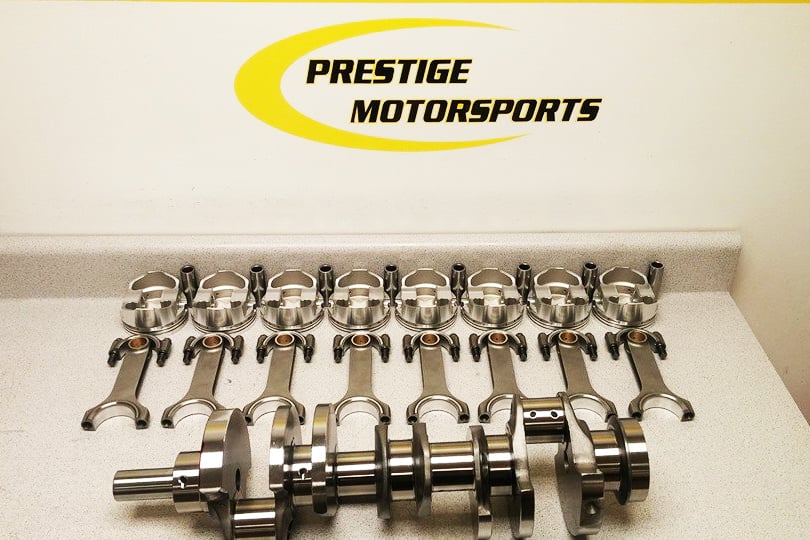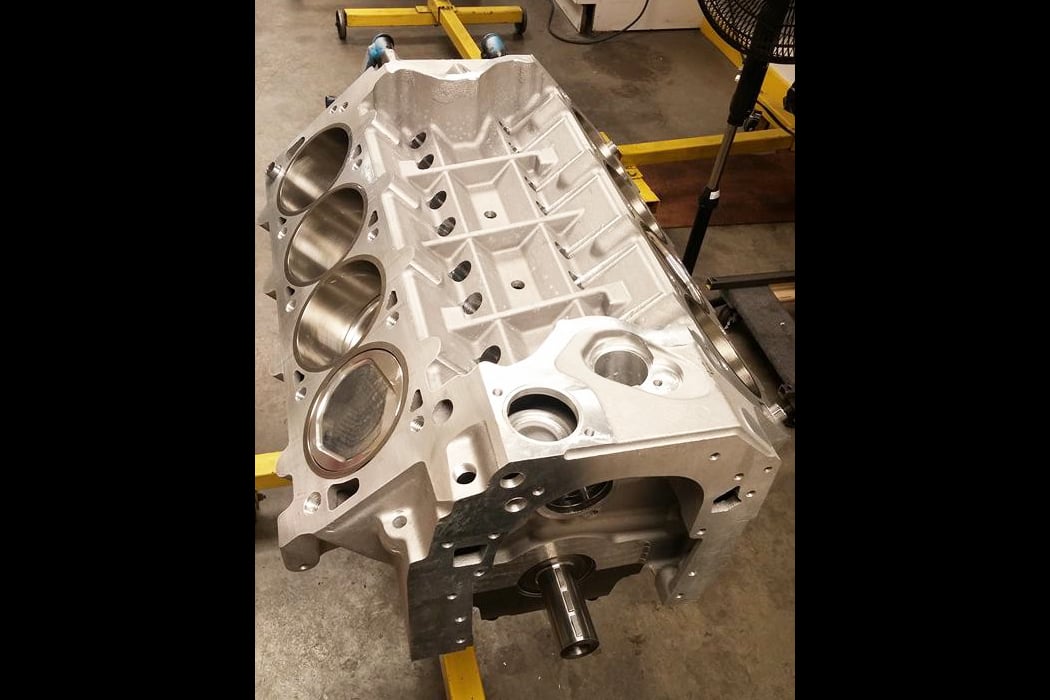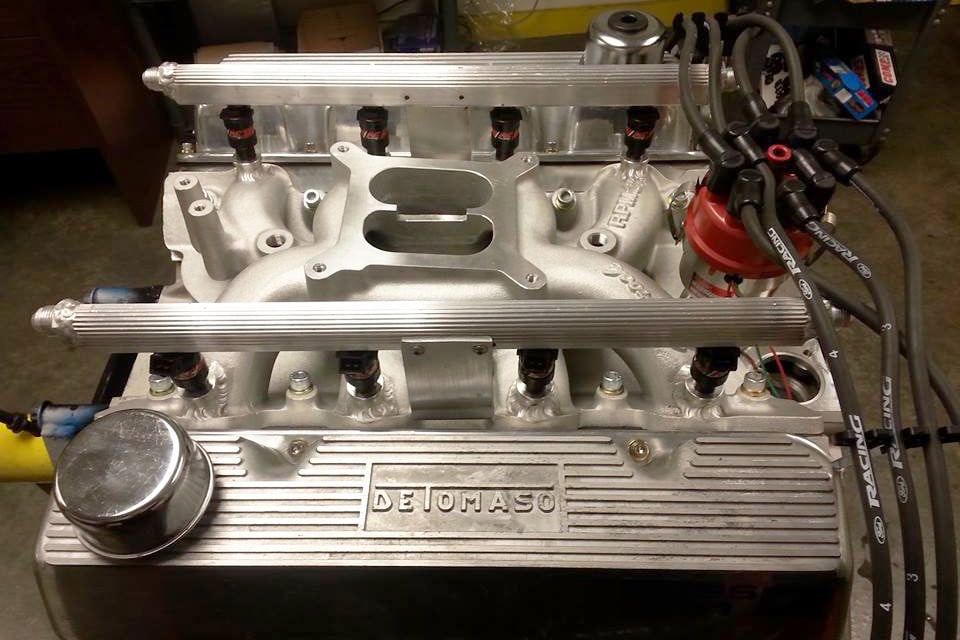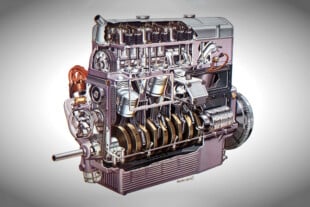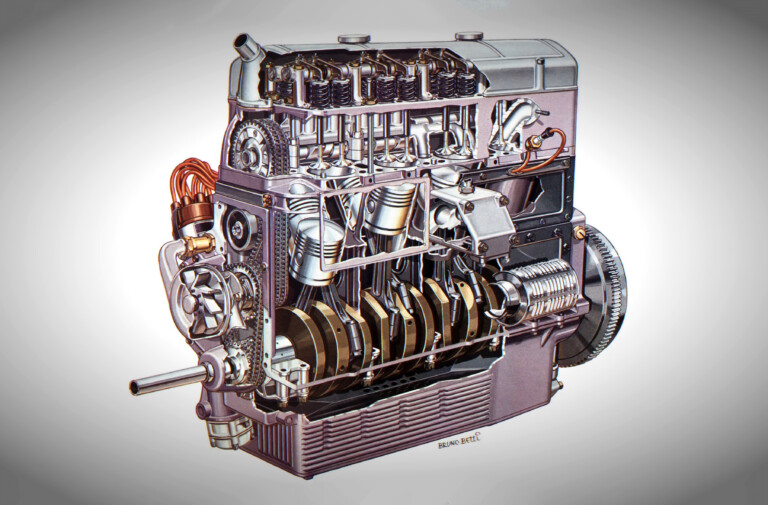Ford Cleveland fans have frequently fallen on hard times when it comes to finding a variety of performance parts for their build. The primary concern used to be the engine block, but enthusiasts finally got a break a few years back with the release of the aftermarket block from Titus Performance Products. With the bottom end taken care of, now the trouble comes on the top side, at least for fuel injected engines.
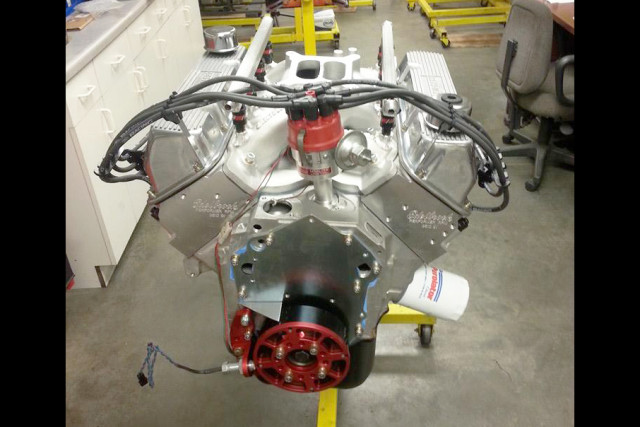
This all-aluminum 393 Cleveland stroker features the aftermarket block from Titus and a dual plane manifold customized for EFI.
Prestige Motorsports recently built a 393 cubic inch, all aluminum stroker engine for Ron Cantu’s street driven Pantera.
Naturally the aftermarket block from Titus was used for the base, as it offers many advantages over using a stock Cleveland block. There are more details on the block’s construction in this previously featured Enginelabs article.
A 3.850-inch stroke provided by the Scat forged steel crankshaft combined with a 4.030-inch cylinder bore produced 393 cubic inches. A set of Eagle 4340 Forged steel H-beam rods have custom JE pistons attached.
The short block consists of a Scat crank, Eagle H-beam rods, and JE pistons. The aluminum block from Titus houses the rotating assembly. Head studs are installed for extra clamping force.
The short block is topped off with a set of Performer RPM heads from Edelbrock. Prestige does a custom valve job and bowl blend on every head prior to installation. A custom grind camshaft from Comp Cams, combined with a 1.7-ratio rocker from Scorpion, lifts the intake valves .567-inch off the seat, while the exhaust opens up to .552-inch lift. Duration lands on the street friendly side, with figures of 235 degrees on the intake side and 249 degrees on the exhaust valves, measured at .050-inch lift. The extra exhaust duration and a 108-degree lobe separation gives the engine a nice thump at idle.
As with many of the builds undertaken at Prestige Motorsports, fuel delivery is provided by Holley’s HP EFI system. In this case, the customer had an outdated system that was not up to the task. The throttle body was reused, but the remainder of the system was replaced with Holley’s. Since the Pantera is going to be street driven, a dual plane manifold was desired to provide more bottom end when it is needed. However, finding a quality dual-plane manifold that was geared for eight injectors proved futile. EFI manifolds are readily available in single-plane, high-rise form. The dual-plane setup was desired to flatten out the power curve for a street application. Of course, that didn’t stop our friends at Prestige Motorsports from accomplishing their goals.
The Edelbrock manifold was modified by Prestige Motorsports to accept fuel injectors.
Prestige decided to stick with the proven performance of the RPM Air Gap manifold, also from Edelbrock. This dual-plane manifold gives the best of both worlds: a max torque dual-plane setup with raised runners that help to keep the air-fuel charge cool by separating the runners from the manifold’s base. This makes the RPM Air Gap a top choice for Prestige on applications up to 550 horsepower. With an in-house machine shop, converting the manifold to accept eight injectors was a breeze. Holes were drilled in each runner and bungs welded into place. Custom fuel rail mounts were fabricated and installed.
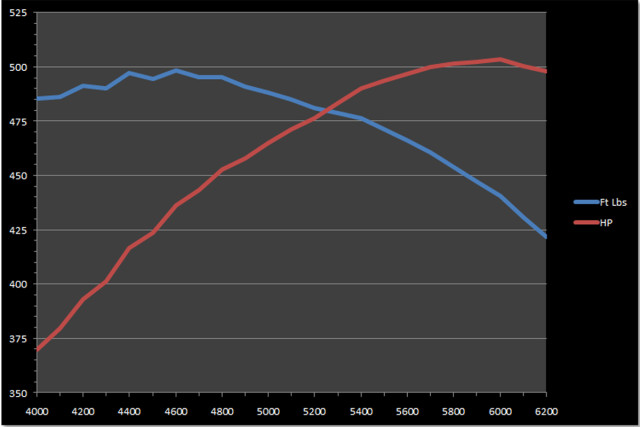
The dual plane manifold provided a flat torque curve in lower RPM ranges which is ideal for street driving.
The result was a relatively flat torque curve that will provide optimum power for street driving. Had a high rise intake been used on this engine, the torque curve would have been much more exaggerated, resulting in less power available in the lower RPM range — and that’s not street-friendly. Any top end horsepower gains would have been minimal.
With a base curb weight around 3,200 pounds, and stated power output for this engine just over 500 horsepower, the Pantera will be lugging around 6.4 pounds per horse — a better power-to-weight ratio than the 2015 base-model Corvette, which Car & Driver claims covers the 0-60 benchmark in 3.7 seconds. And Cantu has the side-benefit of owning a Pantera!



